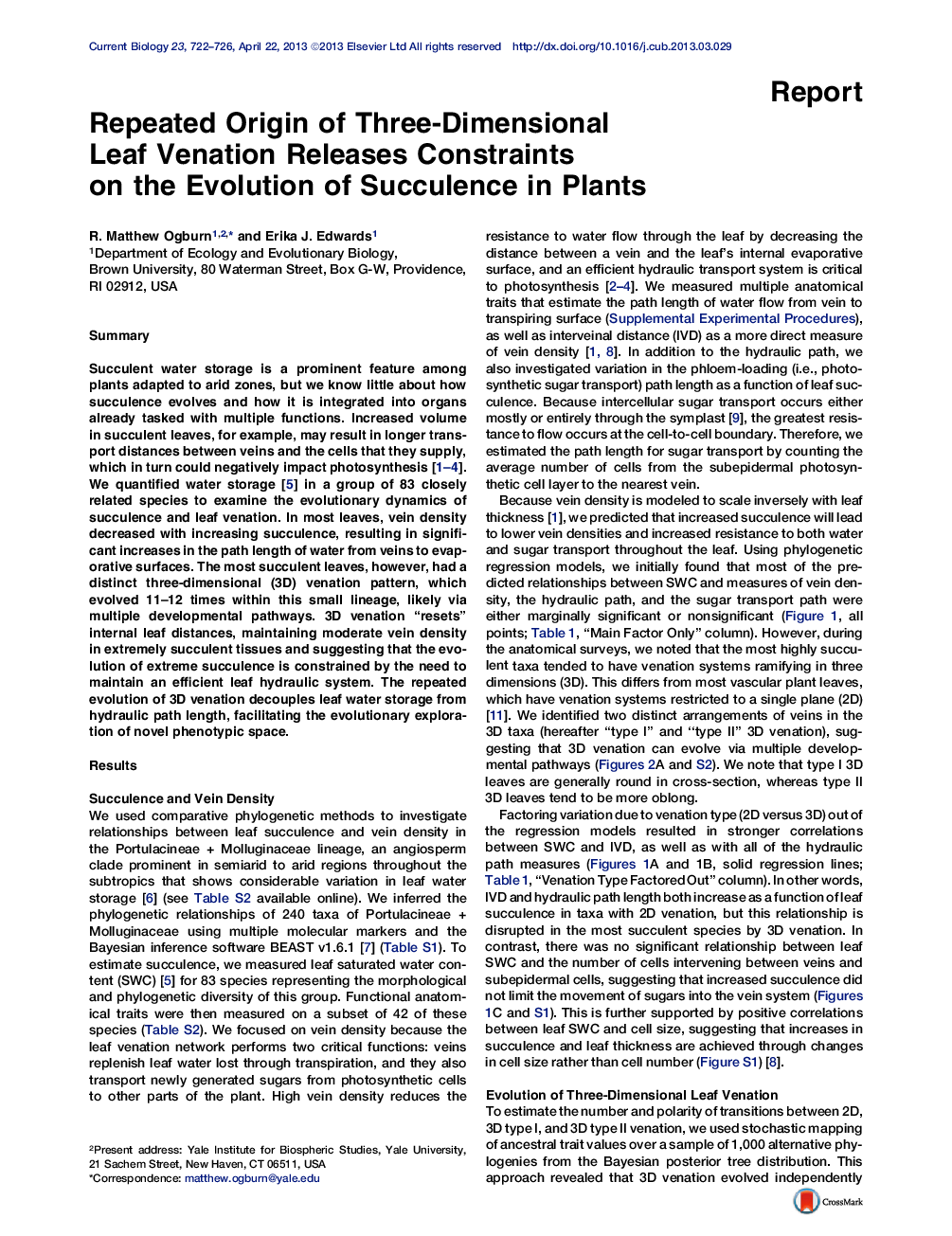| کد مقاله | کد نشریه | سال انتشار | مقاله انگلیسی | نسخه تمام متن |
|---|---|---|---|---|
| 2043023 | 1073315 | 2013 | 5 صفحه PDF | دانلود رایگان |

SummarySucculent water storage is a prominent feature among plants adapted to arid zones, but we know little about how succulence evolves and how it is integrated into organs already tasked with multiple functions. Increased volume in succulent leaves, for example, may result in longer transport distances between veins and the cells that they supply, which in turn could negatively impact photosynthesis [1, 2, 3 and 4]. We quantified water storage [5] in a group of 83 closely related species to examine the evolutionary dynamics of succulence and leaf venation. In most leaves, vein density decreased with increasing succulence, resulting in significant increases in the path length of water from veins to evaporative surfaces. The most succulent leaves, however, had a distinct three-dimensional (3D) venation pattern, which evolved 11–12 times within this small lineage, likely via multiple developmental pathways. 3D venation “resets” internal leaf distances, maintaining moderate vein density in extremely succulent tissues and suggesting that the evolution of extreme succulence is constrained by the need to maintain an efficient leaf hydraulic system. The repeated evolution of 3D venation decouples leaf water storage from hydraulic path length, facilitating the evolutionary exploration of novel phenotypic space.
Graphical AbstractFigure optionsDownload high-quality image (205 K)Download as PowerPoint slideHighlights
► The evolution of extreme succulence in leaves is constrained by low vein density
► An unusual 3D leaf venation has evolved repeatedly in the most succulent leaves
► 3D leaves maintain veins in close proximity to photosynthetic tissues
► 3D venation facilitates the evolution of previously inaccessible phenotypes
Journal: - Volume 23, Issue 8, 22 April 2013, Pages 722–726